5 Top Tech Solutions For Hybrid Companies
With over 50% of US workers working remotely at least once a week and tech solutions catching up quickly to meet the new challenges faced by modern businesses, hybrid workplaces... Read More

6 ways to save $$$ on your office space.
Learn more >August 4, 2022 | by
Reviewed by real estate expert Jonathan Tootell
The hallmark of the modern office has been the open office layout. This layout has been common in some work environments – such as newsrooms – for many decades, but it proliferated in many other offices in recent years when cubicles were deemed too restrictive for workers and closed offices for managers were seen by some as too hierarchical.
Open office layouts aren’t one-size-fits-all. In some offices, it just means tearing down the walls, so there are still rows of desks, but employees can more easily see and interact with one another. Other offices recognize that people need a greater variety of workspaces and zones to support their different day-to-day activities, from individual heads-down work to collaborative team projects. This design method is known as activity-based working, which allows employees to choose how and where they work.
So how do you determine whether this popular office layout is right for your team? In this post,we’ll go over:
The office floor plan is like the blueprint for your office setup. It lays out where desks, chairs, couches, conference rooms, breakrooms, recreational space, office equipment, and other important furniture items and areas are located. An office floor plan can be as simple or as intricate as you choose: some businesses opt for rows and rows of desks, while others require a mix of private offices, open workspaces, and collaboration areas. Your office floor plan should also take into account any important building code requirements such as means of egress, proper lighting and ventilation, and ADA-compliant fixtures.
When determining your desired office floor plan, there are numerous factors that you will want to consider. Among them are:
It is smart to answer questions like these at the outset, as it will help give you a better sense of what type of layout will best suit your team.
The popularity of open office layouts is due to a number of benefits they can offer organizations. Some of these benefits include:
Despite the many potential advantages, there has been a growing backlash against the idea that an open office concept is best for everyone. Some studies have indicated that open office layouts hurt productivity rather than enhance it and threaten to dampen employee morale in the workplace. That, paired with the business and health impacts of the pandemic, has pushed companies to re-evaluate their office layout needs.
Some workers say they prefer a closed office environment because they feel that they can avoid distractions around the office, evade unwanted interaction, and better focus on work. It’s true that, at first glance, cubicles may seem a bit dreary and isolating, but in reality, they help repel noise and offer employees the comfort of a dedicated, semi-private space. Employees can even put up family photos and posters and create a sense of a little “home away from home” for themselves if they like.
Better physical health can also be an advantage of closed office spaces, as the partitions can help mitigate the spread of germs, especially when employees suffer from colds or anything similarly contagious. Many companies added partitions to desk clusters at the start of the pandemic to help keep employees safe and reduce the risk of transmission.
These are among the reasons that some are arguing for the return of the closed office. But perhaps an even better approach is to think of office layouts in less rigid terms and experiment with different concepts to find the floor plan that best suits your company’s objectives.
The most important amenity that modern workers want in their office is a place where they can focus and work without interruptions. When surveyed by Oxford Economics about their feelings about their workplace, 68% of people ranked the ability to work with little to no interruption as one of the three most important aspects. This is compared to a mere 7% when asked about office amenities such as free food and on-site daycare.
Open office layouts require a strong design plan to implement the style in a way where you can reap the benefits of having it. Many company executives, however, aren’t getting that message. In many cases, they’re just sticking people in an open room and saying, ‘here you go.’ As they try to save money and emulate the collaborative models of some successful Silicon Valley and San Francisco startups, one of the least considered aspects of office design is the desire to minimize distractions.
Nearly two-thirds of execs surveyed say that employees have what they need to deal with distractions, but less than half of employees actually agree with that statement. A possible reason for this disconnect is that many executives work under different circumstances than regular employees. Executives are much more likely to have private offices, so they may have trouble understanding the full extent of the distractions their employees face. Private offices allow for fewer interruptions, less ambient noise, and increased levels of focus.
Millennials, who many think would flourish in a workplace environment where they can socialize, prioritize a space with few distractions. They are also more likely to say that noise distracts them from their work and that they find ambient noise in the office particularly annoying. And much like millennials, Gen Z desires quiet and private spaces within the office where they can focus and accomplish head-down work. They also appreciate flexible workspaces that support a variety of work-related needs with minimal distraction.
Members of the younger generations are likely to take steps to counteract the noise in the office, such as listening to music or sitting away from their desks. In this situation, it becomes increasingly difficult to collaborate with these employees because they are actively trying to avoid those around them. When this becomes the case, open office layouts create the exact opposite of the transparent, collaborative environment they’re intended to encourage.
An open office doesn’t mean your team is stuck in a noisy pool of borderless, unproductive space. Here are a few ways to use partitions to alleviate some of the well-known problems with open office layouts.
The number of floor plans for offices is as many and varied as a person can imagine, but there are some basic concepts that one can start with as a guide when considering how to design an office space. These include:
Open office layouts
This is the most widespread layout used in offices, with some estimates showing around 70% of offices embracing an open floor plan with few or no partitions separating workers. This office design removes barriers with the goal of facilitating communication and collaboration between colleagues.
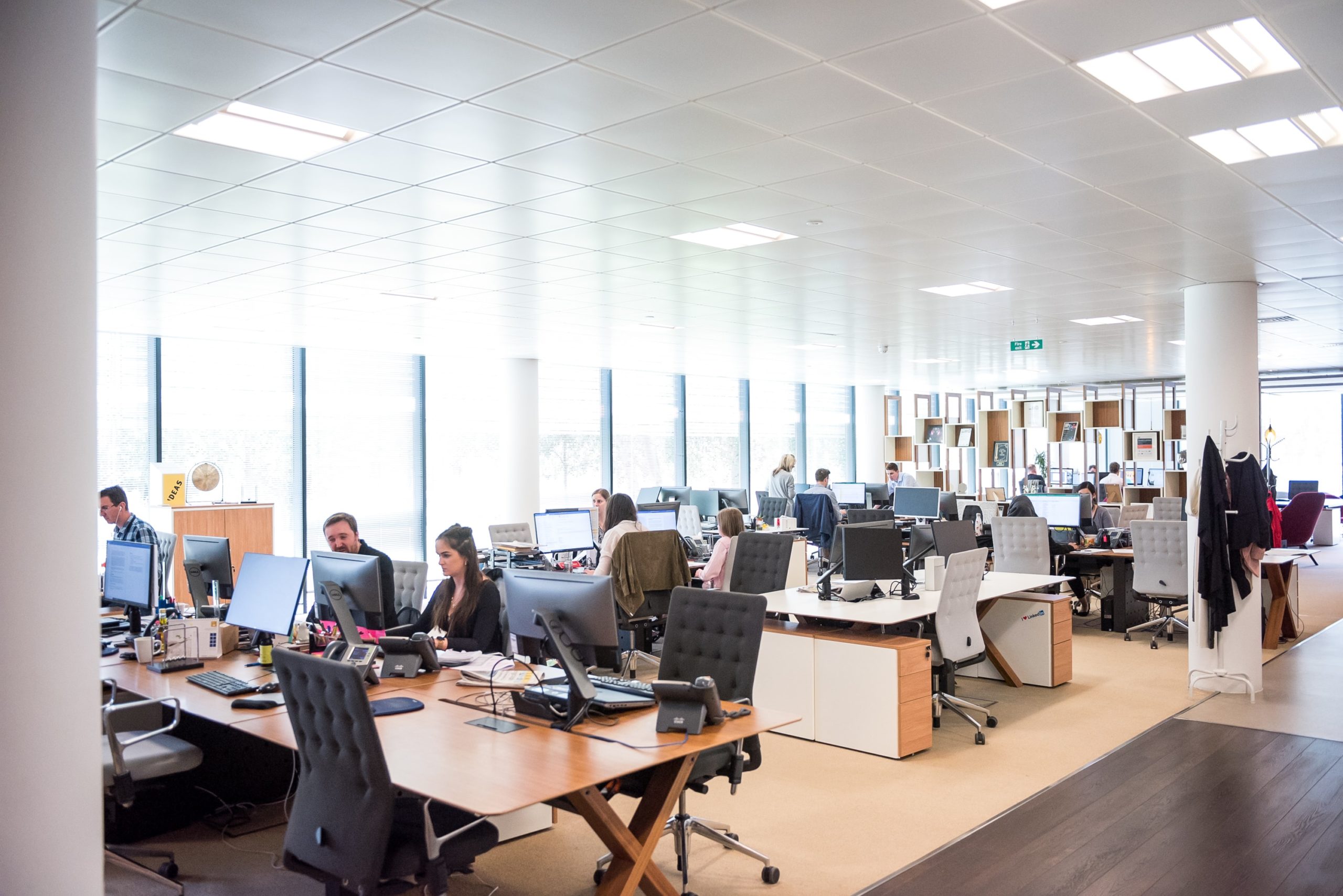
Cubicle-based floor plans
The office filled with separate cubicles is a classic and is still utilized in many offices, especially in businesses where employees must be on the phone for a significant amount of their workday. Cubicles provide more privacy and a quieter space for employees.
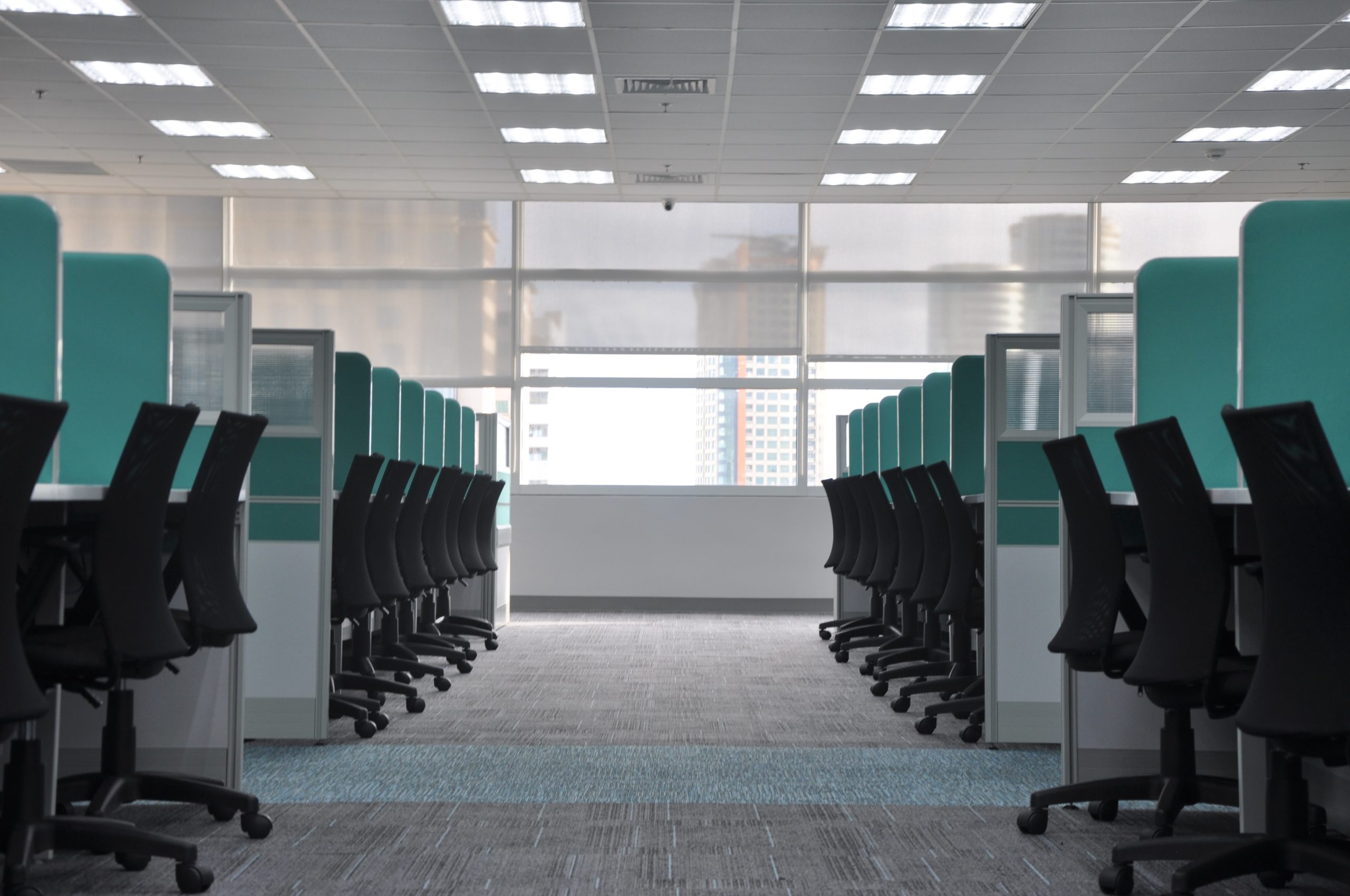
Low-partition office floor plans
A low-partition layout offers an alternative to the cubicle that still creates a defined separation between workspaces while making it easier for employees to be still able to communicate with one another.
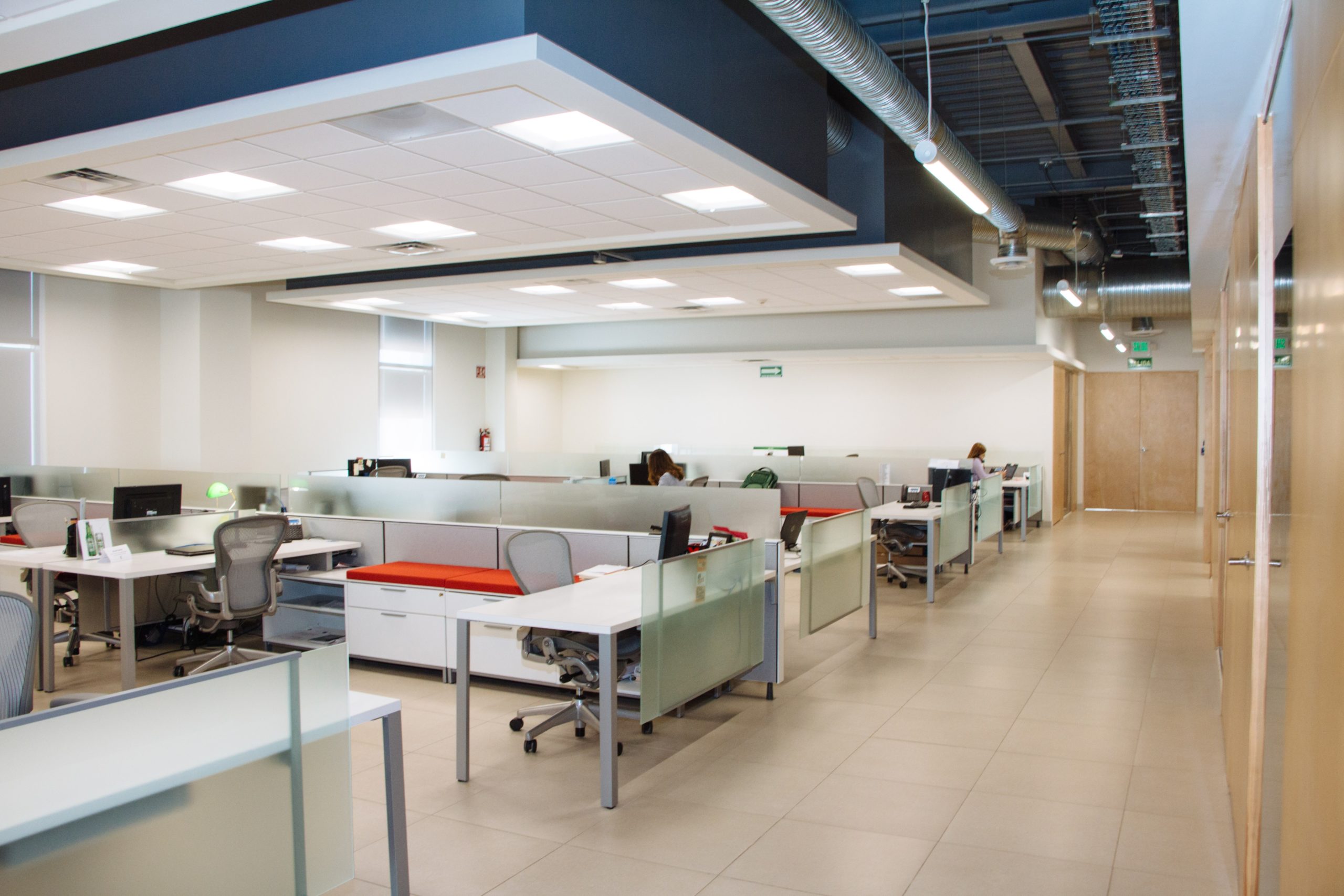
Team-based layouts
This less common but highly useful type of floor plan acknowledges the fact that in some businesses, tight-knit teams are constantly working together and need a workspace that facilitates those efforts. Team layouts typically provide three to six workspaces situated closely together, while providing a partition or space to give them distance from the other teams. This allows the team members to function in close proximity, while also enjoying privacy from the distraction of other employees.
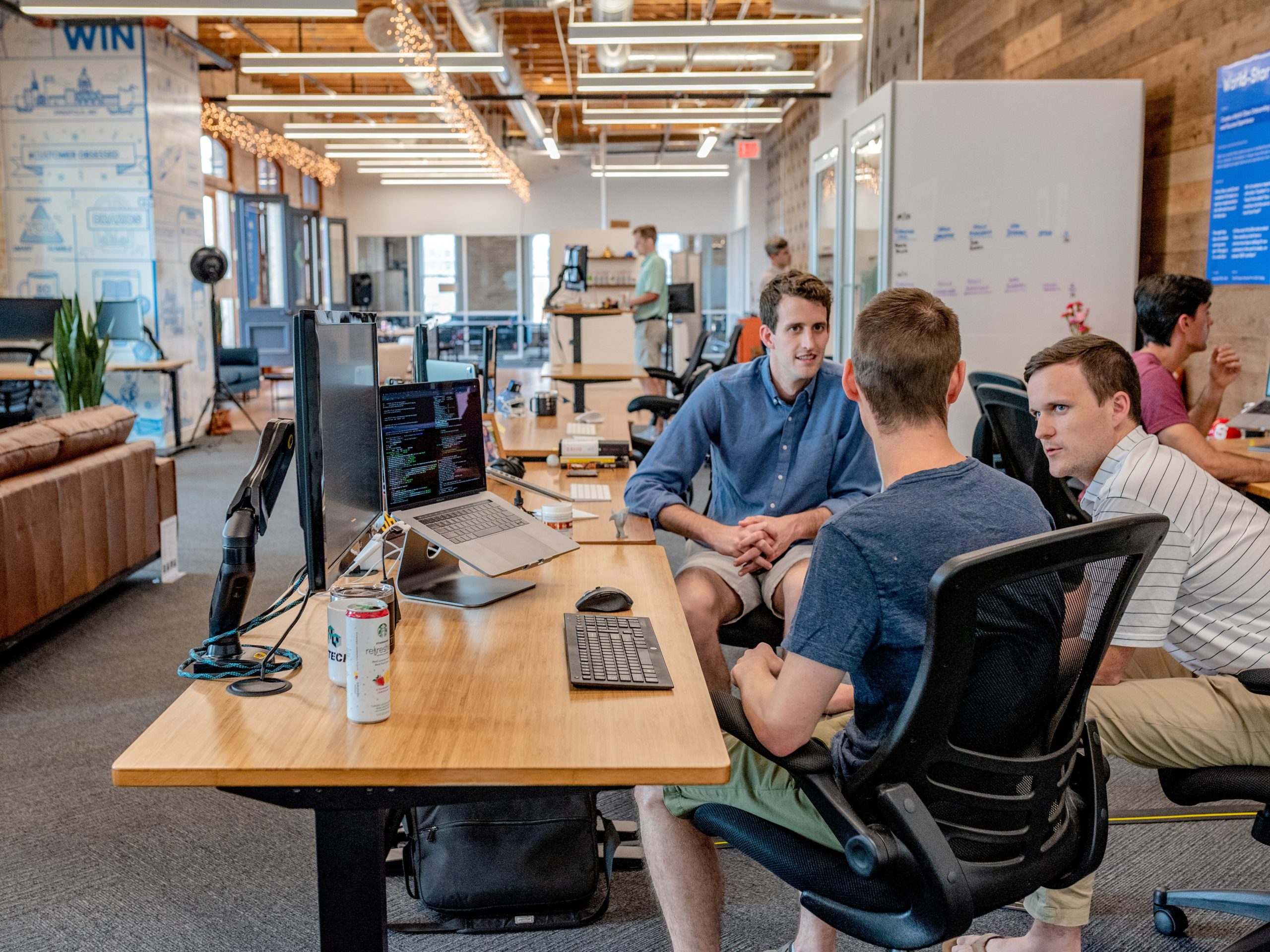
Hybrid office layouts
As the drawbacks of open office layouts become better understood, there is a greater interest in finding alternatives. That doesn’t have to mean simply throwing out the open concept entirely. There is still a lot to appreciate about open office layouts, so some designers believe the best approach is to create hybrid office plans that capture the best of both worlds.
Hybrid layouts support both in-person and remote work with a focus on functionality, flexibility, and collaboration. Some hybrid plans have the majority of desks arranged according to an open concept office floor plan, but also provide an array of enclosed office spaces that can be reserved as needed for meetings and team efforts. Others create larger “private” offices to accommodate dedicated teams rather than individuals. Another solution is to assign cubicles or low-partition workspaces to individuals, while also providing plenty of open meeting tables and sofas for when employees need to confer with others or just want a change of atmosphere.
New ideas are constantly devised to deal with the challenges of the workspace. The noise issue remains one of the most significant problems, which is what something like this “office pod” aims to deal with by providing a semi-private work booth when needed. Innovations like this can be a key part of creating the ideal hybrid office space.
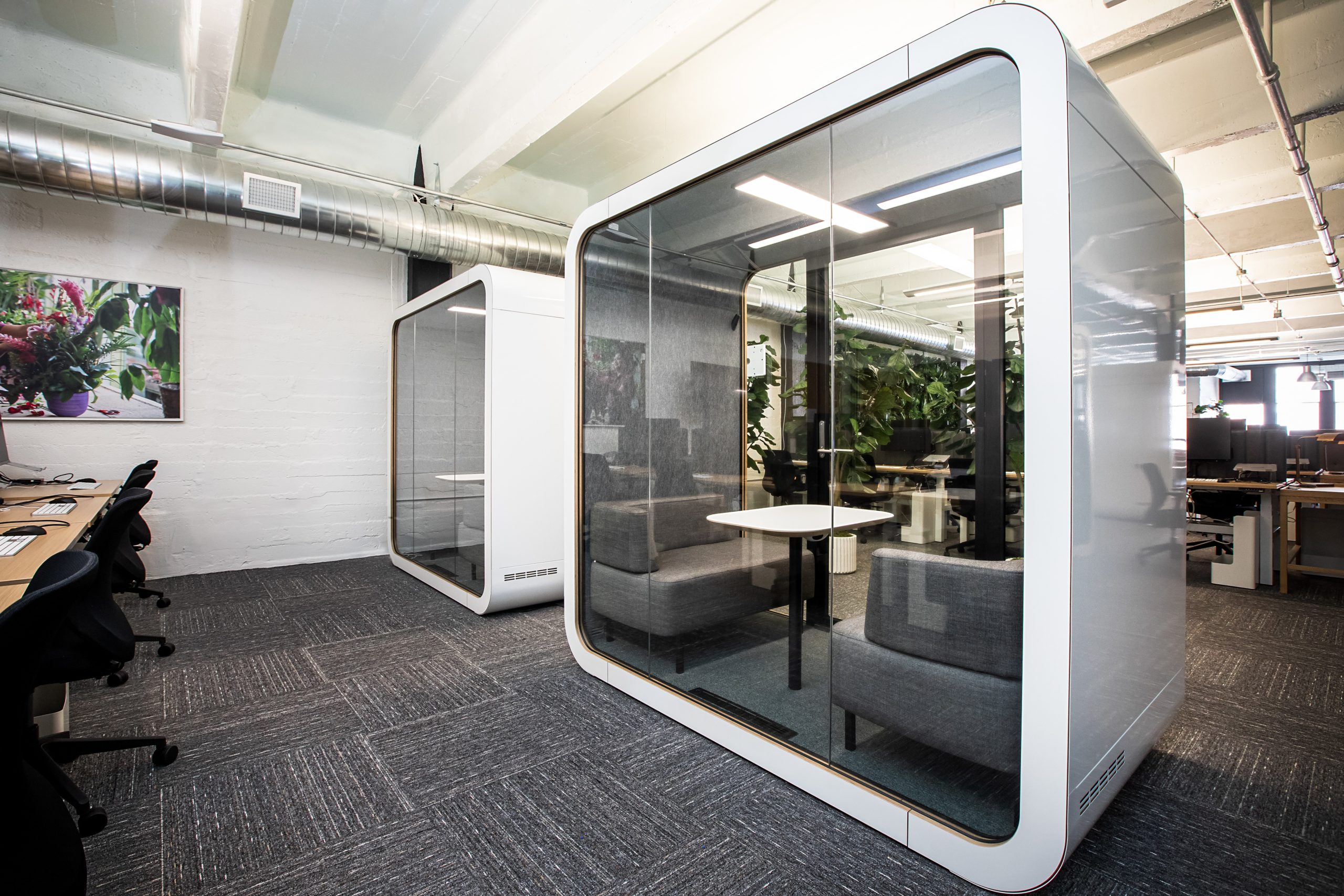
A company should never consider its office layout an afterthought, as the floor plan will most certainly affect the productivity and success of its employees. The office space has to accommodate many different needs and personalities while facilitating a range of team goals and corporate objectives. Meeting these requirements is a challenge and one that may demand a lot of flexibility and willingness to try different layouts. Keep our tips, as well as the pros and cons we outlined above, in mind when redesigning your office space.
Open office layouts may no longer be considered the best choice by default, but aspects of the open concept office can be combined with other layouts to create your ideal office design. It’s all about finding the right balance.
SquareFoot is a new kind of commercial real estate company. Our easy-to-use technology and responsive team of real estate professionals delivers the most transparent, flexible experience in the market. Get in touch to start your search today.